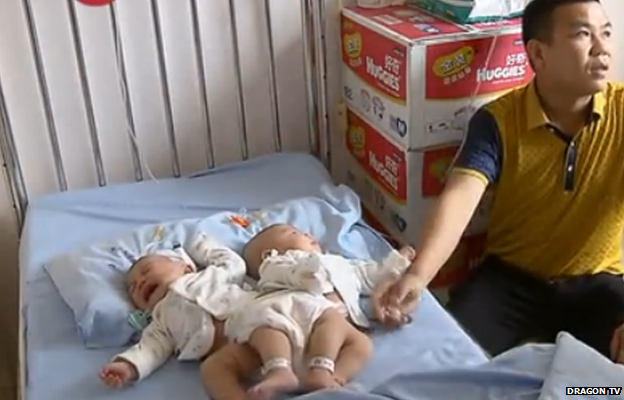China: 3D printer helps separate conjoined twins
- Published

The twins' parents did not know they were conjoined until they were born
Chinese surgeons have used 3D printing technology as part of a successful operation to separate conjoined twins.
The 12-week-old sisters were born connected at the hip and lower spine, and shared one lower bowel, . On Tuesday, they underwent five hours of surgery at Fudan University Children's Hospital in Shanghai, a centre which specialises in separating conjoined twins. To prepare for the operation, doctors at the hospital sent data gathered from CT and MRI scans to a 3D printing company, which then built two models of the girls' conjoined body parts, .
A charity donated 200,000 yuan ($32,000; £20,000) towards the cost of the surgery
Surgeons say the resulting replica gave them a better understanding of exactly how to tackle the operation. "It helped us to decide on a more precise starting point on the body," says Dr Zheng Shan, who led the team.
The twins are now under observation in the hospital's intensive care unit, . They were born on 17 March in China's eastern Jiangxi Province, and it had not been detected beforehand that they were conjoined.
In 2014, surgeons in the United States used a 3D printer to make a model of a two-week-old baby's heart, which was full of holes and had an unusual chamber layout. like a "road map", allowing them to examine the heart's structure ahead of the surgery.
The model helped surgeons to determine how best to approach the complex operation
Next story: Bulgarian tsar statue mocked for glow-in-the-dark eyes
Use #NewsfromElsewhere to stay up-to-date with our reports via .